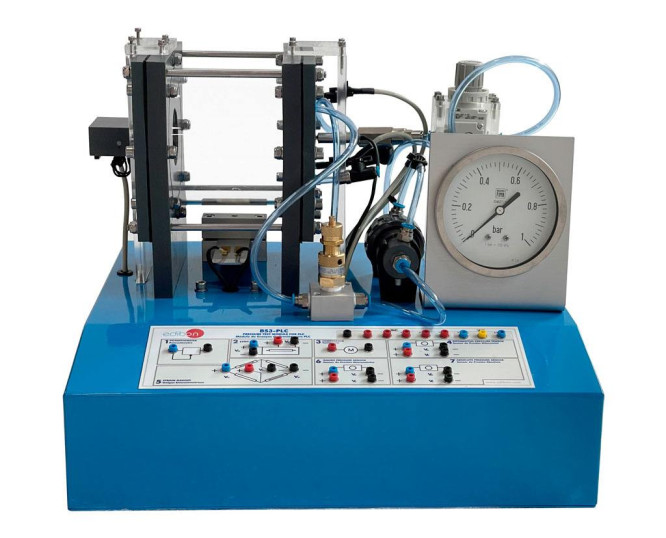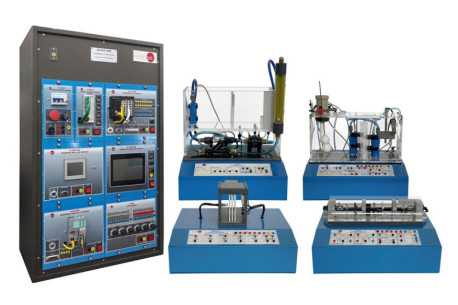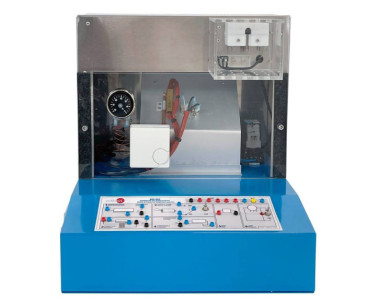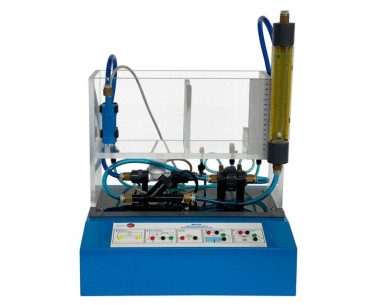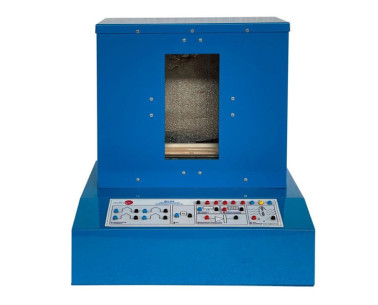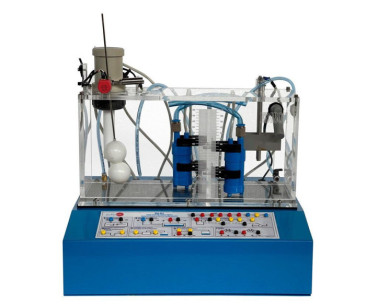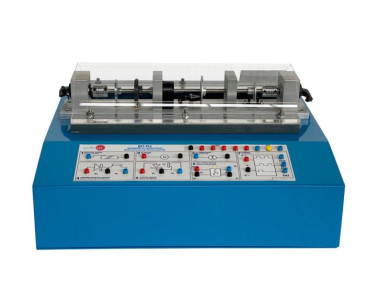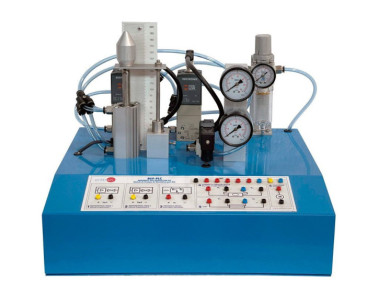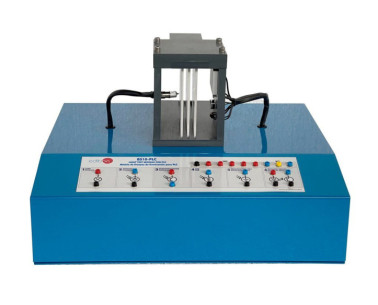At EDIBON, we are committed to strengthening skills as a strategic pillar for the competitiveness and social well-being of the European Union. Proper training not only boosts the economy but also enables individuals to fully participate in society and democracy.
BS3-PLC 用于PLC的压力测试模块
創新系統
The "BS3-PLC" has been designed to study the pressure measurement techniques and control application with a PLC.
相關新聞
一般說明
The "BS3-PLC" has been designed to study the pressure measurement techniques and control application with a PLC. This unit is equipped with a pressure chamber with several sensors, with different uses and applications, adjusted to measure the pressure changes inside the chamber and control the pressure with a PLC. One of the pressure sensor output signals is conditioned to be connected to the PLC. The unit works with a compressor and a manometer connected next to a regulating valve that can adjust the maximum pressure inside the chamber. On both sides of the pressure chamber there are two diaphragms where displacement sensors are connected to measure the pressure valve. The pressure inside the chamber can be controlled by a PLC, controlling the air supply depending on the pressure values obtained from a sensor.
* Available PLC models of different manufacturers: PANASONIC, SIEMENS, OMRON, MITSUBISHI, ALLEN BRADLEY, etc.
練習和指導練習
手册中包含的指导实践练习
- Use of linear positioning sensor (potentiometer) to detect the displacement produced by a diaphragm expansion caused by the air pressure.
- Use of a LVDT as an element to measure the diaphragm distortion that is consequence of the pressure inside the pressure chamber.
- Differential pressure sensor with hole-board system. Use of a differential pressure sensor of the semiconductor type to measure the pressure fall in a hole-board system.
- Strain gauges. To detect objects using an infrared sensor by light beam interruption.
- Measure the pressure in the chamber, using two different types of sensors (manometric and absolute pressure sensor).
- Strain gauges for measuring deformations: their heating element changes as the diaphragm expands due to the pressure coming from the pressure chamber.
- Using the analog inputs and outputs of the PLC to read and write analog signals.
- Read the pressure sensor signal with the PLC.
- Manual control of the actuator through the PLC.
- PID control of the pressure value through the PLC.
- Observe the effects of the pressure control to changes in the PID parameters.
配套设备
6.2.3.- 用PLC进行仪表控制
BS-PLC
The Modular System for the Study of Sensors with PLC Control, "PLC-BS", are a large number of modules that show the operation of different sensors to understand the sensor control applications of different technologies, applied to common...
6.2.3.- 用PLC进行仪表控制
BS2-PLC
用于PLC的温度测试模块
The "BS2-PLC" has been designed to study the use and applications of temperature sensors as a measure device and how to perform a temperature control through a PLC. TThe unit has a half-open space inside which there is a lamp that heats the...
6.2.3.- 用PLC进行仪表控制
BS4-PLC
用于PLC的流量测试模块
The "BS4-PLC" has been designed to study the flow measurement techniques and control with PLC. This unit is unit with two tanks assembled on a structure with a pumping system that allows pumping the water from the reservoir tank, through the...
6.2.3.- 用PLC进行仪表控制
BS5-PLC
用于PLC的炉子测试模块
The "BS5-PLC" has been designed to study the temperature measurement techniques inside a sealed place, such as an oven and how to perform a temperature control through a PLC. This unit is equipped with an oven that contains a heating element and a...
6.2.3.- 用PLC进行仪表控制
BS6-PLC
用于PLC的液位测试模块
The "BS6-PLC" has been designed to study the liquid level measurement and control techniques of a tank through a PLC. This unit is unit with two tanks with sensor of different technology for level measurement. One of the level sensor output...
6.2.3.- 用PLC进行仪表控制
BS7-PLC
用于PLC的转速计测试模块
The "BS7-PLC" has been designed to study the linear and angular speed measurement techniques through a PLC. This unit is unit with a miniature motor to move an axle at different speeds, being able to adjust de motor speed by changing the voltage...
6.2.3.- 用PLC进行仪表控制
BS9-PLC
用于PLC的气动试验模块
The "BS9-PLC" has been designed to study the control and handling techniques of a pneumatic actuator through a PLC. The actuator is a double acting pneumatic cylinder that allows moving a platform. The displacement of the piston axle is detected...
6.2.3.- 用PLC进行仪表控制
BS10-PLC
用于PLC的照明测试模块
The "BS10-PLC" has been designed to study different light measurement techniques and control light intensity through a PLC. This unit is composed of a lamp whose intensity can be controlled according to the voltage applied and a series of...
質量

售後服務

 Cookies首选项
Cookies首选项

